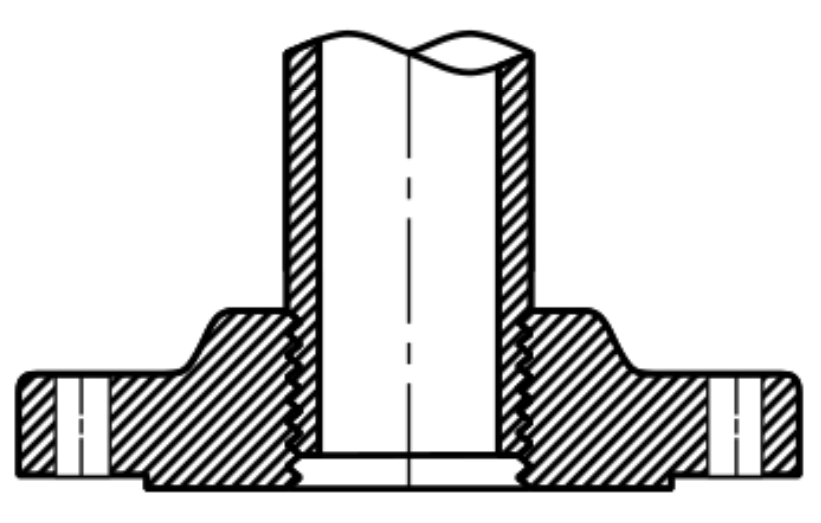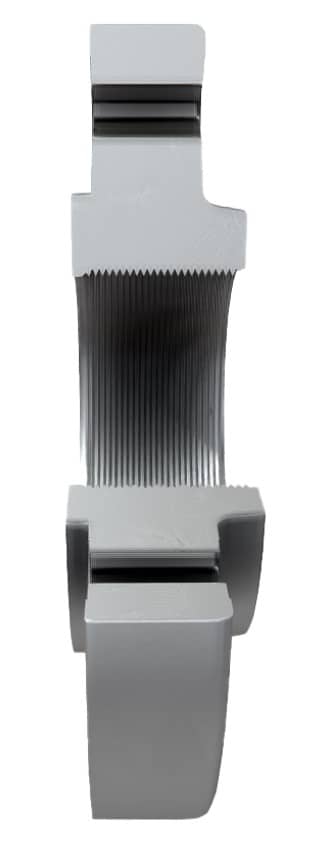What is a threaded flange?
The threaded flange design (also called a ‘screwed flange’) uses a screw thread to connect the flange to a pipe. A male thread is cut onto a pipe end whilst a female thread is cut into the bore of the flange; the male threaded pipe is then screwed into the female threaded flange.

Threaded Flange
Even though the threaded flange design is available in many sizes and pressure ratings, it is mainly used for small sized piping systems i.e. ≤ 4 inches. Its usage is also typically restricted to non-toxic systems, low pressure systems, and low temperature systems. ½ inch to 2-inch size threaded flanges are much more common than sizes of 2 inches and above. Due to their lower pressure applications, threaded flanges use flat and raised faces only. They are not suitable for high temperature applications because the thread geometry would distort, which often leads to leakage.
The major advantage with threaded flanges is that they can be connected to a pipe without the need for welding. Forming joints without needing to weld is a considerable advantage, and is essential in some locations and industries e.g. explosive areas (Ex rated areas) such as petrol stations, hexane plants, stores with flammable fluids etc. If no welding is required, a potential source of ignition is removed. Another advantage is that it is quicker and easier to assemble and disassemble a threaded flange joint than a welded flange joint.

Threaded Flange
Threaded flanges are not suitable for pipes that have a thin wall thickness, since cutting a thread on such pipes is difficult. In some cases, a seal weld may be used to increase the flange’s integrity and reduce the likelihood of leakage. Adding a seal weld will increase the flange’s integrity, but it also makes the joint more difficult to assemble and disassemble (because the weld makes it a permanent joint).
Most engineering groups and associations limit the use of threaded flanges to a size range from ½ to 4 inches, and pressure class 300 and below. Because no weld is used, threaded flanges are more prone to leakage than their welded joint counterparts, and the seal is susceptible to damage if flange misalignment occurs. For these reasons, threaded flanges are a poor choice for hazardous systems where leakage could have catastrophic implications.
Non-Destructive Testing (NDT) Techniques
Radiography can be used to check for corrosion on the flange face, and also for thread engagement/alignment.
ASME Standards
The requirements for the threaded flange connections are reflected in the ASME B1.20.1 and ASME B31.3 standards.
Are you enjoying this article so far? Then be sure to check out our Flange Fundamentals Video Course. The course has over five hours of video content, a 52 page colour illustrated handbook (this article is an extract from the handbook), a quiz, and you will receive a certificate of completion when you finish the course. Enjoy!
Flange Types, Faces, and Surfaces - Explained!
This video is part of our Piping Flange Fundamentals Video Course
Related Online Engineering Courses
Introduction to Steam, Boilers and Thermodynamics
Additional Resources
https://www.texasflange.com/threaded-flanges
https://blog.projectmaterials.com/flanges/flange-types-piping
